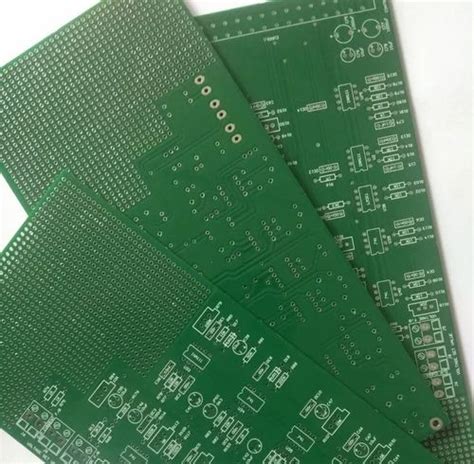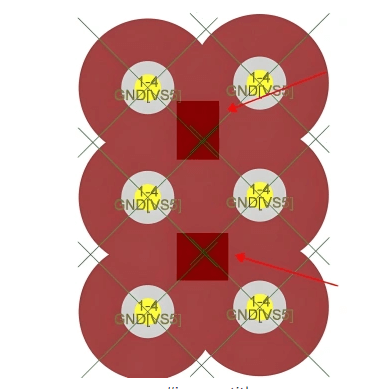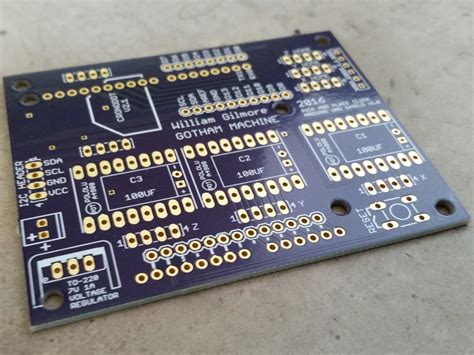ki-pcd
Understanding The Basics Of KI-PCD: A Comprehensive Guide
KI-PCD, or Knowledge Integration for Product Concept Development, represents a pivotal approach in the realm of product design and innovation. As industries increasingly seek to enhance their competitive edge, understanding the fundamentals of KI-PCD becomes essential for businesses aiming to streamline their product development processes. This comprehensive guide delves into the core principles of KI-PCD, elucidating its significance and application in modern industry.
At its essence, KI-PCD is a methodology that emphasizes the integration of diverse knowledge sources to foster innovative product concepts.
This approach is particularly relevant in today’s fast-paced market environment, where the ability to swiftly adapt and innovate is crucial. By leveraging a wide array of information, from customer feedback to technological advancements, KI-PCD enables organizations to create products that are not only innovative but also aligned with market demands.
One of the primary benefits of KI-PCD is its capacity to enhance collaboration across various departments within an organization.
Traditionally, product development has often been siloed, with limited interaction between teams such as marketing, engineering, and design. However, KI-PCD encourages a more holistic approach, promoting cross-functional collaboration and ensuring that all relevant perspectives are considered during the concept development phase. This collaborative environment not only fosters creativity but also reduces the risk of costly errors and misalignments later in the development process.
Moreover, KI-PCD facilitates a more structured approach to handling the vast amounts of data that modern organizations encounter.
In an era where information is abundant, the challenge lies in effectively filtering and synthesizing this data to derive actionable insights. KI-PCD provides a framework for systematically organizing and integrating knowledge, enabling teams to make informed decisions based on comprehensive analyses. This structured approach not only accelerates the development process but also enhances the quality and relevance of the final product.
In addition to fostering collaboration and improving data management, KI-PCD also plays a crucial role in risk mitigation. By incorporating diverse knowledge sources early in the development process, potential risks and challenges can be identified and addressed proactively. This foresight allows organizations to devise contingency plans and implement necessary adjustments before issues escalate, ultimately safeguarding the project’s success.
Furthermore, KI-PCD is instrumental in aligning product development with strategic business objectives.
By integrating insights from various stakeholders, including customers, partners, and industry experts, organizations can ensure that their product concepts are not only innovative but also strategically aligned with broader business goals. This alignment is vital for maintaining a competitive edge and achieving long-term success in the marketplace.
In conclusion, KI-PCD is a transformative approach that offers numerous benefits for organizations seeking to enhance their product development processes. By promoting collaboration, improving data management, mitigating risks, and aligning with strategic objectives, KI-PCD empowers businesses to create innovative and market-relevant products. As industries continue to evolve, the adoption of KI-PCD will undoubtedly become increasingly important for organizations striving to remain at the forefront of innovation. Embracing this comprehensive methodology will not only streamline product development but also pave the way for sustained success in an ever-changing market landscape.

The Role Of KI-PCD In Modern Technology
In the rapidly evolving landscape of modern technology, the integration of advanced systems and methodologies has become paramount. Among these, KI-PCD, or Knowledge-Integrated Process Control and Decision-making, stands out as a pivotal component in enhancing efficiency and precision across various sectors. As industries increasingly rely on data-driven approaches, the role of KI-PCD becomes even more significant, offering a framework that seamlessly combines human expertise with machine intelligence.
To begin with, KI-PCD is fundamentally about leveraging the synergy between human knowledge and automated processes.
This integration is crucial in environments where decision-making is complex and multifaceted. By embedding expert knowledge into automated systems, KI-PCD ensures that decisions are not only swift but also informed by a depth of understanding that machines alone cannot achieve. This is particularly beneficial in industries such as manufacturing, healthcare, and finance, where the stakes are high and the margin for error is minimal.
Moreover, the implementation of KI-PCD facilitates a more adaptive and responsive operational model.
In traditional systems, process control often relies on static rules and predefined algorithms. However, KI-PCD introduces a dynamic element, allowing systems to learn and evolve based on real-time data and feedback. This adaptability is essential in today’s fast-paced environment, where conditions can change rapidly and unpredictably. For instance, in manufacturing, KI-PCD can optimize production lines by adjusting parameters in real-time, thereby reducing waste and increasing output.
In addition to enhancing operational efficiency, KI-PCD plays a critical role in risk management.
By integrating predictive analytics and scenario modeling, KI-PCD systems can anticipate potential issues before they arise, enabling proactive measures to mitigate risks. This capability is invaluable in sectors such as finance, where market volatility can have significant repercussions. Through KI-PCD, financial institutions can better navigate uncertainties, ensuring stability and resilience in their operations.
Furthermore, the role of KI-PCD extends to fostering innovation and continuous improvement.
By providing a framework for iterative learning and development, KI-PCD encourages organizations to experiment and refine their processes. This culture of innovation is vital for maintaining a competitive edge in an increasingly globalized market. Companies that embrace KI-PCD are better positioned to adapt to new technologies and methodologies, driving growth and success in the long term.
However, the integration of KI-PCD is not without its challenges.
One of the primary concerns is the need for robust data management and security protocols. As KI-PCD systems rely heavily on data, ensuring the integrity and confidentiality of this information is paramount. Organizations must invest in advanced cybersecurity measures to protect against breaches and unauthorized access. Additionally, there is a need for ongoing training and development to equip employees with the skills necessary to effectively interact with KI-PCD systems.
In conclusion, the role of KI-PCD in modern technology is multifaceted and transformative. By bridging the gap between human expertise and machine intelligence, KI-PCD enhances decision-making, operational efficiency, and risk management. As industries continue to evolve, the adoption of KI-PCD will undoubtedly become more widespread, driving innovation and growth. However, to fully realize its potential, organizations must address the challenges associated with data management and workforce development. Through careful implementation and strategic planning, KI-PCD can serve as a cornerstone of modern technological advancement.

Innovations And Developments In KI-PCD Applications
The field of knowledge integration and process-centered design (KI-PCD) has witnessed significant innovations and developments in recent years, driven by the increasing complexity of organizational processes and the need for more efficient and adaptive systems. As businesses strive to remain competitive in a rapidly evolving market, the integration of knowledge and the design of processes that are centered around this knowledge have become paramount. This article explores the latest advancements in KI-PCD applications, highlighting how these innovations are transforming industries and enhancing operational efficiency.
To begin with, one of the most notable developments in KI-PCD is the incorporation of artificial intelligence (AI) and machine learning (ML) technologies.
These technologies have enabled organizations to process vast amounts of data and extract valuable insights that inform decision-making processes. By leveraging AI and ML, companies can automate routine tasks, identify patterns, and predict future trends, thereby optimizing their operations. This integration of AI and ML into KI-PCD applications not only enhances the accuracy of knowledge integration but also allows for more dynamic and responsive process designs.
Moreover, the advent of cloud computing has further revolutionized KI-PCD applications.
Cloud-based platforms provide a scalable and flexible infrastructure that supports the seamless integration of knowledge across different departments and geographical locations. This has facilitated real-time collaboration and information sharing, breaking down silos and fostering a more cohesive organizational culture. As a result, businesses can now design processes that are more aligned with their strategic objectives, ensuring that knowledge is effectively utilized to drive innovation and growth.
In addition to technological advancements, there has been a growing emphasis on user-centered design within KI-PCD applications.
This approach prioritizes the needs and experiences of end-users, ensuring that processes are intuitive and accessible. By involving users in the design process, organizations can create systems that are not only efficient but also user-friendly, leading to higher adoption rates and improved satisfaction. This shift towards user-centered design reflects a broader trend in the industry, where the focus is increasingly on creating value for customers and stakeholders.
Furthermore, the integration of big data analytics into KI-PCD applications has opened new avenues for process optimization.
By analyzing large datasets, organizations can gain a deeper understanding of their operations and identify areas for improvement. This data-driven approach enables businesses to design processes that are more efficient and effective, ultimately leading to cost savings and enhanced performance. The ability to harness the power of big data has become a critical component of KI-PCD, providing organizations with a competitive edge in today’s data-driven economy.
As we look to the future, it is clear that the landscape of KI-PCD applications will continue to evolve.
Emerging technologies such as the Internet of Things (IoT) and blockchain hold the potential to further enhance knowledge integration and process design. IoT devices can provide real-time data from various sources, enabling more accurate and timely decision-making. Meanwhile, blockchain technology offers a secure and transparent way to manage and share knowledge, ensuring data integrity and trust.
In conclusion, the innovations and developments in KI-PCD applications are reshaping the way organizations operate, offering new opportunities for efficiency and growth.
By embracing these advancements, businesses can create more adaptive and resilient processes that are better equipped to navigate the challenges of the modern world. As technology continues to advance, the potential for KI-PCD applications to drive transformation across industries remains vast, promising a future where knowledge and processes are seamlessly integrated to achieve optimal outcomes.

Challenges And Solutions In Implementing KI-PCD Systems
Implementing Knowledge-Intensive Process-Centric Development (KI-PCD) systems presents a unique set of challenges and opportunities. As organizations increasingly seek to leverage these systems to enhance efficiency and innovation, understanding the hurdles involved and the potential solutions becomes crucial.
One of the primary challenges in implementing KI-PCD systems is the integration of complex knowledge structures with existing processes.
Organizations often possess vast amounts of tacit and explicit knowledge that need to be effectively captured and utilized. This requires sophisticated knowledge management tools and strategies that can seamlessly integrate with current workflows. Moreover, the dynamic nature of knowledge, which continuously evolves, necessitates systems that are adaptable and capable of updating in real-time.
Another significant challenge is the resistance to change that often accompanies the introduction of new systems.
Employees accustomed to traditional processes may be hesitant to adopt new methodologies, fearing disruption or a steep learning curve. This resistance can be mitigated through comprehensive training programs and change management strategies that emphasize the benefits of KI-PCD systems, such as increased efficiency and enhanced decision-making capabilities. By fostering a culture of continuous learning and innovation, organizations can encourage employees to embrace these new systems.
Furthermore, the implementation of KI-PCD systems requires substantial investment in technology and infrastructure.
Organizations must ensure that they have the necessary resources to support these systems, including robust IT infrastructure and skilled personnel. This can be a daunting task, particularly for smaller organizations with limited budgets. However, by adopting a phased implementation approach, organizations can gradually integrate KI-PCD systems, allowing them to manage costs effectively while minimizing disruption to existing operations.
Data security and privacy also pose significant challenges in the implementation of KI-PCD systems.
As these systems often involve the collection and analysis of sensitive information, organizations must ensure that they have robust security measures in place to protect data from unauthorized access and breaches. This includes implementing encryption technologies, access controls, and regular security audits. Additionally, organizations must comply with relevant data protection regulations, which can vary significantly across different jurisdictions.
Despite these challenges, there are several solutions that organizations can employ to facilitate the successful implementation of KI-PCD systems.
One effective approach is to engage in thorough planning and analysis before implementation. This involves conducting a comprehensive assessment of the organization’s current processes and knowledge assets, identifying areas for improvement, and developing a clear roadmap for implementation. By setting clear objectives and milestones, organizations can ensure that they remain focused and on track throughout the implementation process.
Collaboration and communication are also key to overcoming challenges in implementing KI-PCD systems.
By fostering a collaborative environment, organizations can encourage knowledge sharing and innovation, which are essential for the success of these systems. This can be achieved through the use of collaborative tools and platforms that facilitate communication and information exchange among employees.
In conclusion, while the implementation of KI-PCD systems presents several challenges, these can be effectively addressed through careful planning, investment in technology and infrastructure, and fostering a culture of collaboration and innovation. By doing so, organizations can unlock the full potential of KI-PCD systems, leading to enhanced efficiency, improved decision-making, and a competitive edge in the marketplace. As organizations continue to navigate the complexities of the modern business environment, the successful implementation of KI-PCD systems will undoubtedly play a crucial role in their long-term success.







